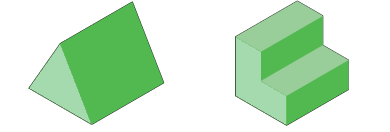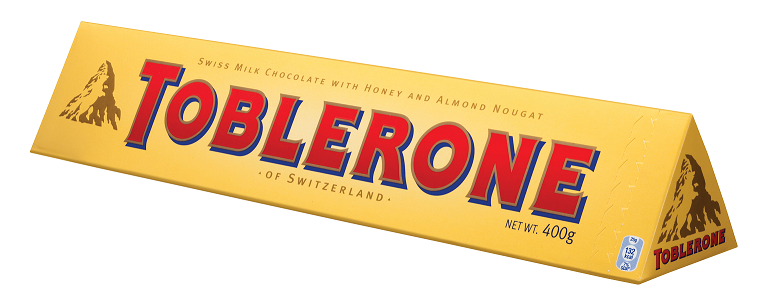
Classification of Solids
Prisms
A prism is defined as a solid geometric figure whose two end faces are similar, equal, and parallel. These are both prisms. Prisms need to have all straight edges and faces, no curves.

A prism has a base and a uniform cross section. The base is one of the two parallel identical ends. The bases for the these prisms are shaded blue.

A uniform cross section means that if we slice the solid (imagine cutting it liked sliced bread) at any point parallel to the base then it will have the exact same shape as the base.
Prisms occur very commonly in packaging of grocery items, and finding the volume of these contributes to the design, shape and size of packaging and product - and all of these affect the price that we pay!



Cube
A rectangular prism with all 6 faces being squares is called a cube.
Cylinder
A cylinder is similar to a prism, it has two parallel circular faces. It also has a uniform cross section. It is not classified as a prism because of the circular edge and face.
Pyramids
A pyramid can be made in the following way:
- Use any polygon as a base. We can have square bases, triangular bases or even hexagonal bases.
- Then connect every vertex of the base to an apex point above the base, and you have a pyramid.
We can name a pyramid by the shape of the base. Square and rectangular based pyramids, are the most common you will come across in mathematics, but also in the real world.
![]()


Cones
A cone is made by connecting a circular base to an apex.
Cone shapes appear everywhere in the real world.


Spheres
A sphere is made by having a central point and then creating a surface where all points on the surface are the same distance from the centre.
We mostly recognise spheres as balls.

- If the solid has a uniform cross section it is a prism. We name it by identifying the base, (or the shape of the cross section) and the word prism. eg rectangular prism, triangular prism, hexagonal prism, trapezoidal prism
- If the solid has 2 parallel circles as edges, we call this a cylinder.
- If the solid has 6 sides and all of them are squares, we call this a cube.
- If the base is a polygon, and all the vertices are connected to a common apex then it is a pyramid and we name it by using the name of the shape that the base is and using the word pyramid. eg rectangular pyramid, triangular pyramid, octagonal pyramid
- If the base is a circle, and it connects to a point we call this a cone.
- If the base is completely circular, we call this a sphere.

Now that we know how to name a solid, the next step is to understand some of the language that is used to describe them.
Regular Solids
Regular solids have faces that are all identical. They have a special name called platonic solids. The most familiar regular shape is a cube, where each face is a square. (notice the names of these normally have -hedron at the end.

Convex or Concave
As we saw for 2D shapes, describing flat shapes as convex or concave came down to identifying if there was a cave like shape to the edges.
For 3D solids, the idea of concave and convex is the same.

Right or Oblique
A right solid is one that has its axis at right angles to its base.
- Right cone, has its apex at right angles to the centre of the base.
- Right pyramid, has its apex at right angles to the centre of the base.
- Right prism has the central line (axis) at right angles to the centre of the base.
- Right cylinder has the central line (axis) at right angles to the centre of the circular base.
These solids are all right solids and notice the red axis line that shows it is perpendicular to the base.

These solids are all oblique solids, notice the red axis line that shows its angle to the base.
